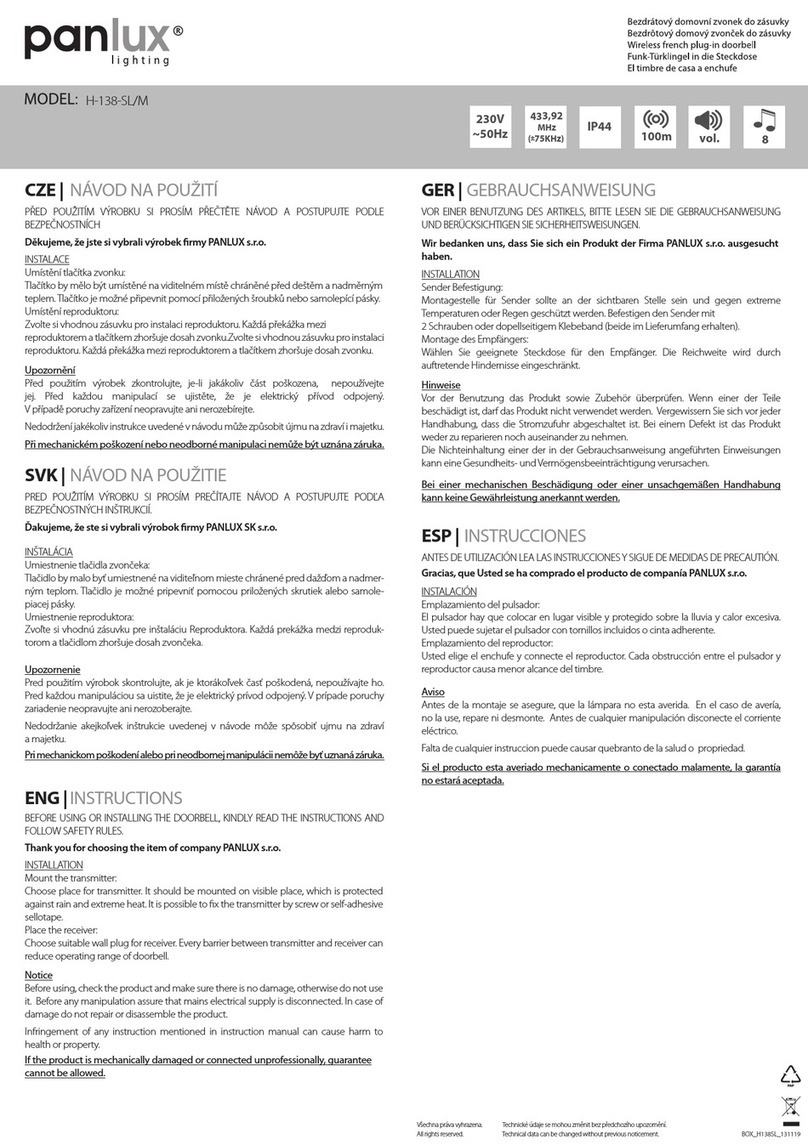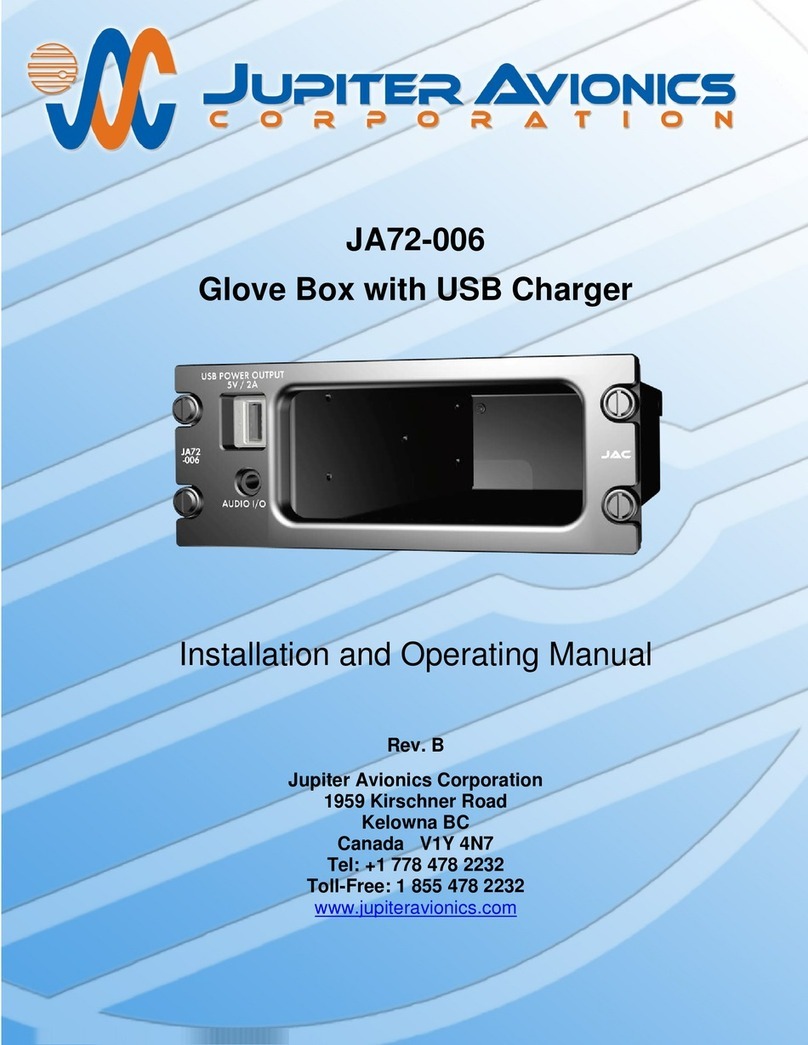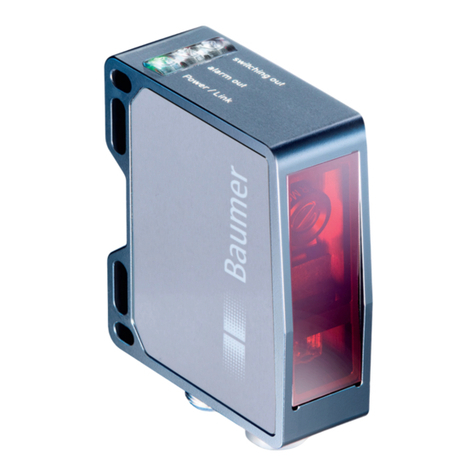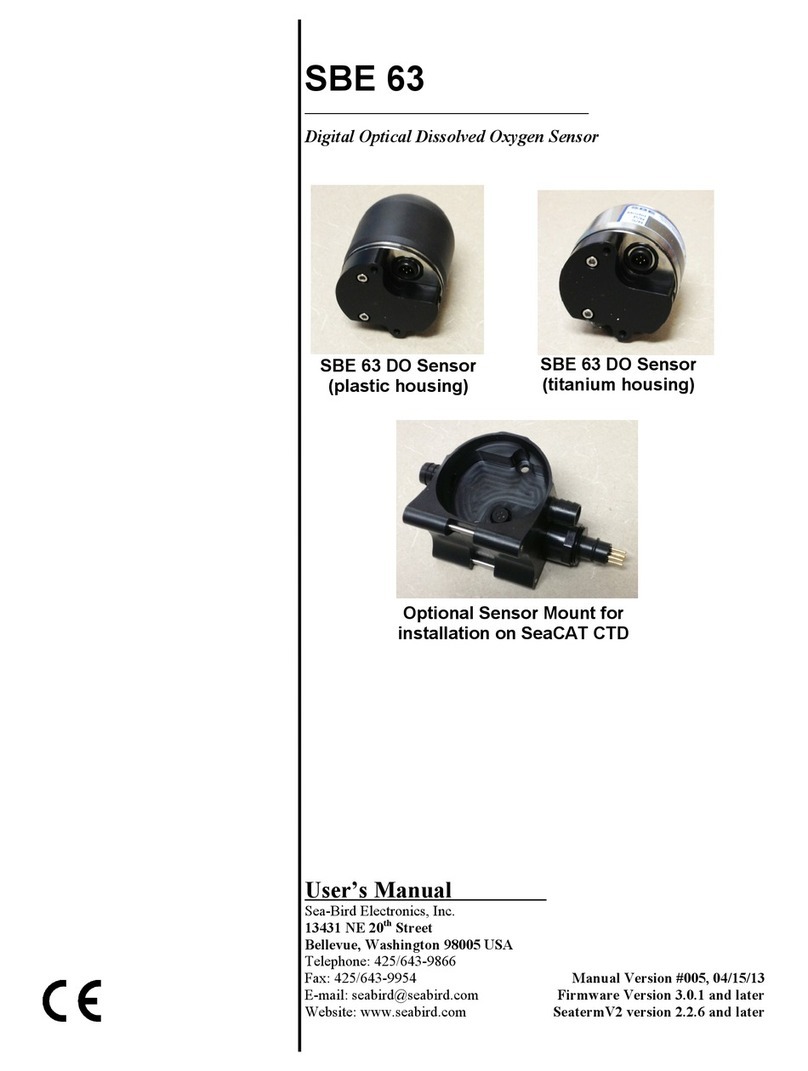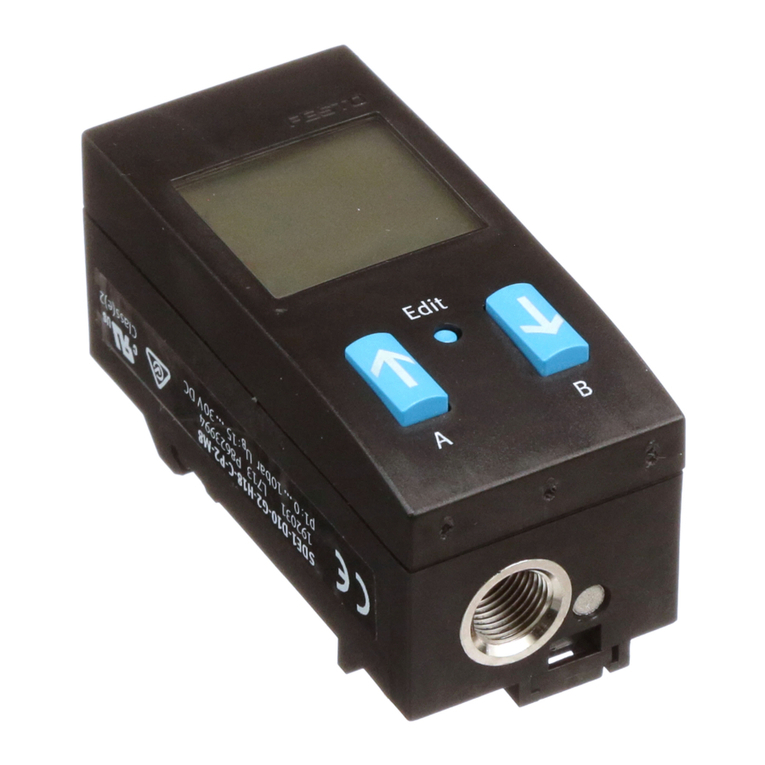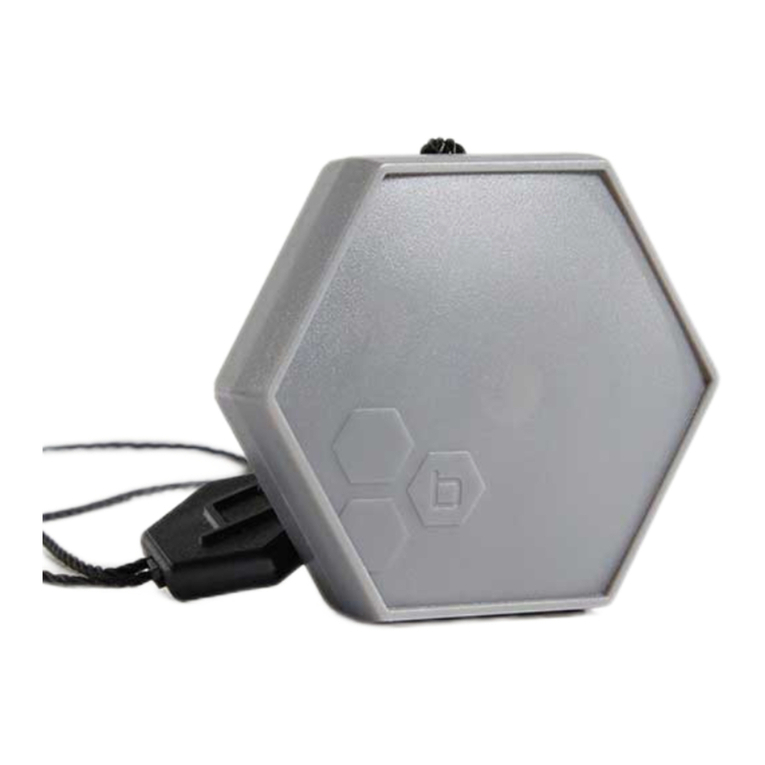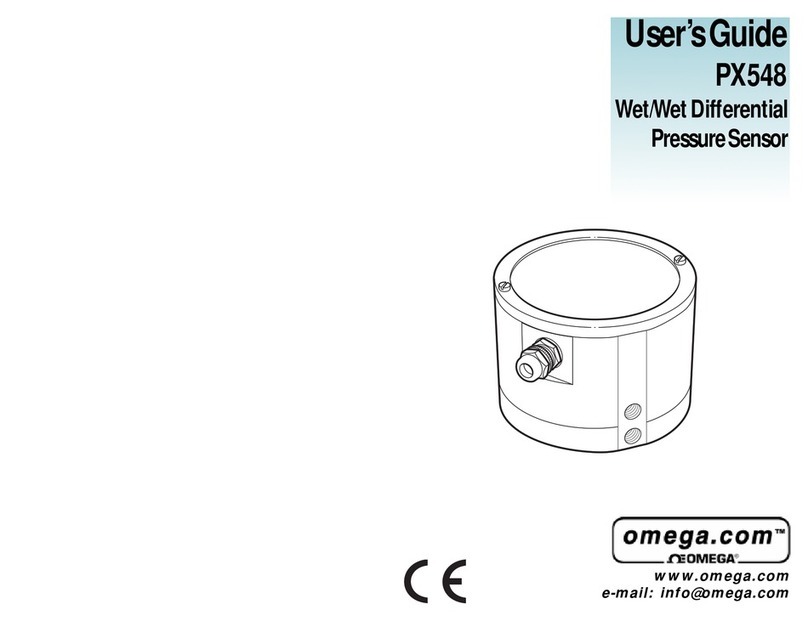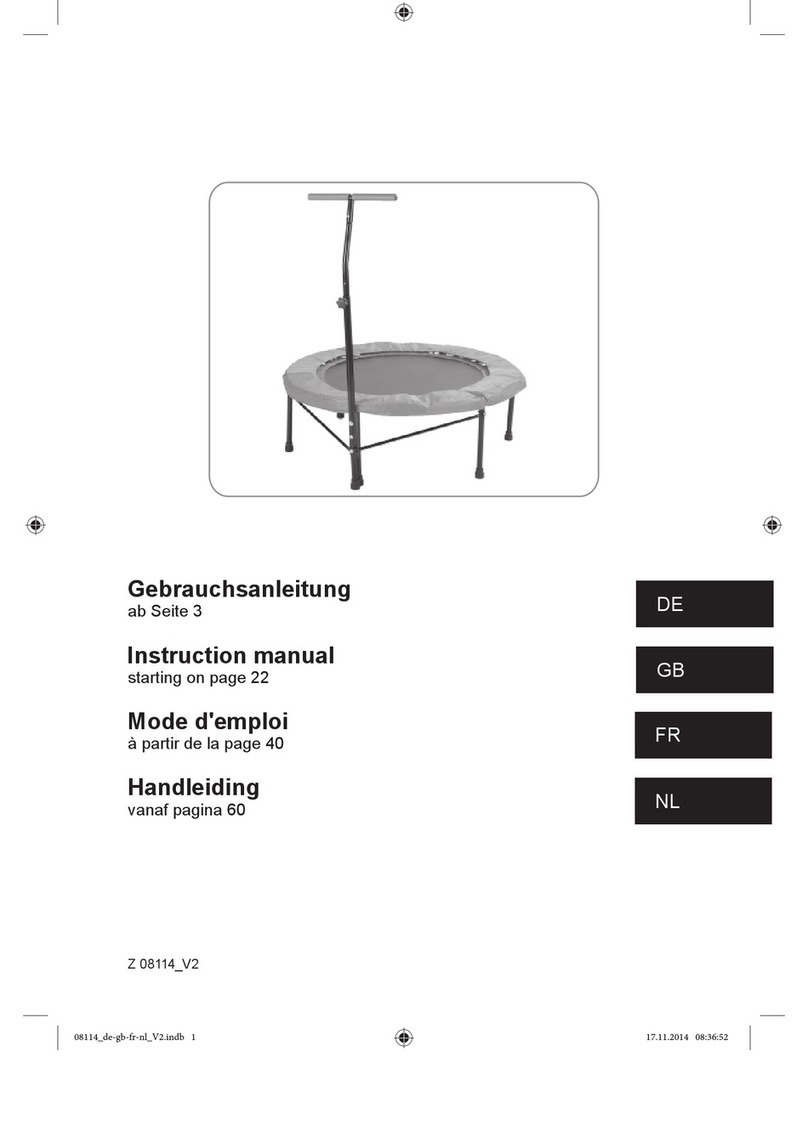GridSense Line IQ LIQ60 User manual

000-2166 Rev 3.0 Franklin Grid Solutions LLC December 20, 2017
User Manual


000-2166 Rev 3.0 Franklin Grid Solutions LLC
Page 1 of 37
Copyright
© Franklin Grid Solutions, LLC 2010-2017
The material presented in this manual is copyright protected by Franklin Grid Solutions
LLC. Any reproduction in whole or in part for any purpose without the prior written
consent of Franklin Grid Solutions LLC is strictly prohibited.
Information in this document is subject to change without notice.
All trademarks are the property of their respective owners.

File: LIQ User Manual V2.0
Page 2 of 37
Contents
1 Safety............................................................................................................................... 4
1.1 Hazard Assessment................................................................................................ 4
1.2 Working on energized conductors and equipment................................................. 4
1.3 Equipment safety.................................................................................................... 5
2 Introduction to the LineIQ devicefamily....................................................................... 6
2.1 Glossary.................................................................................................................. 8
2.2 Implementation Scenarios .................................................................................... 10
2.3 System Functionality............................................................................................. 10
2.4 LIQ-60 Conductor Mounted Sensor overview ...................................................... 10
2.4.1 LIQ-60 Design………………………………………………………………………11
2.4.2 LIQ-60 Sensing………………………………………………………………………..12
2.4.3 Operation Modes……………………………………………………………………...13
2.4.4 Visual Indicators……………………………………………………………………….15
2.4.5 Power Factor Calculation…………………………………………………………….18
2.5 LIQ-Gateway Overview......................................................................................... 19
2.6 LIQ-LocalLink Overview........................................................................................ 19
3 Initial setup.................................................................................................................... 21
3.1 LIQ-LocalLink installation...................................................................................... 21
3.1.1 For Microsoft Windows 7……………………………………………………………..21
3.1.2 For Microsoft Windows XP…………………………………………………………. 21
3.2 LIQ-60 setup......................................................................................................... 21
3.2.1 Switching on the LIQ-60……………………………………………………………...22
4
Configuration...........................................................................................................................
22
4.1 LIQ-60 configuration............................................................................................. 22
5
Commissioning.......................................................................................................................
22
5.1 Commissioning the LIQ-60................................................................................... 22
5.1.1 Pre-commissioning check of the LIQ-60s………………………………………….22
6 Installation and removal............................................................................................... 23
6.1 LIQ-60 installation................................................................................................. 23
6.1.1 Pre-installation………………………………………………………………………… 23
6.1.2 Mounting………………………………………………………………………………..23
6.1.3 Post-installation checks………………………………………………………………23
6.1.4
Removal……………………………………………………………………………………...
24
7 Power Systems............................................................................................................. 24
7.1 LIQ-60 Battery ...................................................................................................... 24

000-2166 Rev 3.0 Franklin Grid Solutions LLC
Page 3 of 37
7.2 SolarPanels.......................................................................................................... 24
7.2.1 Solar Panel orientation………………………………………………………………..24
7.2.2 Adjusting the solar panel on the LIQ-60…………………………………………….26
Appendix A –LineMan………………………………………………………………………...28
A.1
LineMan Overview....................................................................................................... 28
A.2
Setting up an LIQ-LocalLink........................................................................................ 28
A.3
ConnectingtotheCMSwithLineMan.......................................................................28
A.4
Displaying LIQ-60 Status/Summary ............................................................................ 29
A.5
Configuring an LIQ-60................................................................................................. 30
A.6
CMS Data Download................................................................................................... 31
Appendix B –Window XP Installation................................................................................ 33
Appendix C .......................................................................................................................... 36
C.1 LIQ-60 specifications .................................................................................................. 36

File: LIQ User Manual V2.0
Page 4 of 37
1 Safety
If you do not understand any instructions in this manual, please ask someone to assist you.
For safety reasons, use only GridSense accessories specifically designed for use with these
products, or accessories that have been approved by GridSense. The use of any other
manufacturer's equipment is NOT recommended, will void the warranty and may cause
safety hazards.
The LIQ-60 Conductor Mounted Sensors are intended to be used on high voltage energized conductors
or equipment. Personnel using equipment on energized lines must be authorized by the relevant
regulatory bodies to carry out such work and must have appropriate training.
The information given in this document is given as a guide only. It is the user's responsibility to ensure
that correct and safe procedures are followed at the actual worksite. GridSense offers no warranty or
indemnity for accidents that may occur when following these instructions.
If the LineIQ products and accessories and associated equipment are used in a manner
other than that specified in this manual, the protection provided by the equipment may be
impaired.
1.1 Hazard Assessment
Prior to installing the equipment, the operator must carry out a worksite, pre-job hazard assessment to
identify the safety and environmental needs. This must be done prior to commencing work and prior to
recommencing work after leaving and returning to the worksite. As a minimum, this hazard assessment
should:
•
Identify possible hazards and risks
•
Identify the safety needs of the job
•
Identify the correct procedures, practices and equipment
•
Eliminate unsafe conditions and actions from the worksite
•
Identify the need for personal protective equipment
•
Inspect equipment before use.
Prior to using an LIQ-Gateway, you should check the following:
•
The sheaths of all cables are secured and undamaged
•
Plugs and connectors are properly connected and serviceable.
•
There should also be an ongoing risk assessment during the job.
1.2 Working on energized conductors and equipment
For the correct and safe use of this equipment, it is essential that all operating personnel follow
appropriate safety procedures. Check your employer or relevant regulatory body's rules for working with
energized equipment.

000-2166 Rev 3.0 Franklin Grid Solutions LLC
Page 5 of 37
1.3 Equipment safety
The LIQ-Gateway and associated equipment should be maintained and regularly tested to make sure the
equipment is in good order.

File: LIQ User Manual V2.0
Page 6 of 37
2 Introduction to the LineIQ device family
The LineIQ monitoring system allows electricity utilities and other operators of high and medium voltage
overhead conductor distribution and transmission lines to monitor and respond to faults and loadchanges
on the supply grid. The monitoring system consists of Conductor Mounted Sensors (CMS),data
collators, and remote or on-site PC-based aalysis and control software. The LineIQ system links toexisting
SCADA or Distribution Management systems. The CMS communicate with the data collators
(LIQ-
Gateways) using short range radio. The LIQ-Gateway and CMS can also communicate with on-site
PCs
(e.g. laptop) using short range radio, when an LIQ-LocalLink is connected to the PC. The LIQ-
Gateways in turn communicate with control rooms via a cellular modem or long range radio links, and
can use a variety of different communication standards.
Figure 1 shows a typical implementation of LineIQ monitoring equipment.
The LIQ-60 CMS detect and store network events and also monitor load currents, power factor,
conductor
voltage, and ambient and conductor temperatures.
Events such as faults, momentary interruptions, sustained interruptions and restorations are radioed to
the LIQ-Gateway as unsolicited events, which in turn are sent on to the SCADA and control center.
Ongoing measurements such as load currents, conductor voltage, and ambient and conductor
temperatures are periodically downloaded to the LIQ-Gateway, which collates the information and sends
it to the control center.
The LIQ-60s are installed on energized lines. They are battery and solar powered for long-term continuous
monitoring. They can be configured and have their firmware upgraded wirelessly using thesame license-
free short-range radio link (RF link) which is used to download data. Hence, there is no need to remove
the LIQ-60s from the conductors after they have been installed.
LIQ-Gateways function as Remote Terminal Units (RTUs) and are mains powered or battery/solar
powered,
depending on location and supply availability. Transmission of load log data from the LIQ-60to the LIQ-
Gateway occurs during a status check which is periodically initiated by the LIQ-Gateway. Thisdata is then
transmitted by the LIQ-Gateway to the remote monitoring system (e.g. SCADA) or is
accessed on demand
using LineMan or SCADA via a variety of supported protocols, for example DNP3,
IEC 61850 or Web
services.

000-2166 Rev 3.0 Franklin Grid Solutions LLC
Page 7 of 37

File: LIQ User Manual V2.0
Page 8 of 37
2.1 Glossary
Term
Meaning
CMS
Conductor Mounted Sensor which detects events on a conductor and logs voltage, current
and temperature for periodic downloading. The LIQ-60 is a CMS.
Commission
Putting equipment into use for the first time. Follows after configuration.
Configure
The process of setting up equipment to perform a designated task. In this manual refers
mainly to firmware. Follows after set-up.
DPF
Displacement Power Factor. A measure of the phase difference between the voltage and
current. { DPF=cos(φ) } Ideally φshould be 0 degrees, so DPF = 1.
DTS
Date & Time Stamping
Event
Profile
Recording
Period
The time (e.g. 1 minute) after an event has been detected and during which the LT-60 records
current and power profiles.
Fast Filter
A 5 sec. average value filter, applies to both current (I) and voltage (V).
FP
Fault Path: a high current event
HV
High Voltage
IED
Intelligent Electronic Device
LED
Light Emitting Diode
LI
Long Interruption: a loss of power on a conductor for at least one minute.
LIQ-
Gateway
The Pole Attached Collator, which receives and collates data from CMS
LIQ-LAN
A local area network consisting of a PC (Laptop) with LIQ-LocalLink for communications, an
LIQ-Gateway & its associated LIQ-60.
LIQ-
LocalLink
A USB-based radio. Used for communications between a PC and the LIQ-Gateway and LIQ-
60s in an LIQ-LAN.
Loss of
volts
When a CMS detects no voltage on the conductor.
LV
Low Voltage
ms
milliseconds
Permanen
t
Fault
Fault detection with loss of supply detected after the end of the event profile recordingperiod.
PMS
Pole Mounted Sensor (as distinct from a CMS).
P-P
Peak to Peak. A measure of a waveform’s amplitude (absolute, unlike RMS) P-P 2.38VRMS
PR
Power Return: return of power after a Long Interruption (LI).
PRT
Platinum Resistance Thermometer. Two are mounted in each LIQ-60 to measure conductor
and ambient temperature.

000-2166 Rev 3.0 Franklin Grid Solutions LLC
Page 9 of 37
Term
Meaning
Return of
volts
When a CMS detects a return of voltage on the conductor after a fault condition.
RF
Radio Frequency
RMS
Root Mean Square (An amplitude of a measurable value, e.g. Voltage, written VRMS). The
square root of the mean over time of the square of the waveform.
RTC
Real TimeClock.
RTU
Remote Terminal Unit. In SCADA terminology, the LIQ-Gateway is an RTU. It collates
information from sensors to be sent to centralized control units.
SCADA
Supervisory Control And Data Acquisition. Usually a computer system that monitors and
controls industrial or facility-based processes.
Self-
clearing
fault
Fault current detected with no loss of supply during the event profile recording p e r i o d .
Set up
The process of setting up equipment to perform a designated task. In this manual refers
mainly to hardware and installation, usually precedes configuration.
SI
Short Interruption: brief (less than one minute) loss of power on the conductor.
SLA Battery
Sealed Lead Acid Battery. The power storage for the LIQ-60 and LIQ-Gateway.
Slow Filter
A 10-day non-linear average reflecting the highest value of current and voltage over the
weekly load cycle.
TPF
True Power Factor. The ratio of the real power flowing to the load, to the apparent power in
the circuit.
Transient
Fault
Fault detected with a loss and return of supply seen during the event profile recording period.

File: LIQ User Manual V2.0
Page 10 of 37
2.2 Implementation Scenarios
A possible implementation scenario is shown in Figure 2.This is a permanent configuration used for
continuous monitoring of power lines using LIQ-60s, LIQ-Gateways and LineMan communications
software.
Figure 1: An installation of GridSense devices as part of a permanent monitoring
configuration.
2.3 System Functionality
With regards to communication among the components in the LineIQ family, the LIQ-60s and the LIQ-
Gateway (and, if present, a laptop PC using an LIQ-LocalLink), form a local area network, the LIQ-LAN.
This network’s communication is based on low power RF.
The LIQ-Gateways which communicate with remote control rooms or SCADA systems, can be viewed
as a wide area network, using any of a range of protocols, such as DNP3, IEC 61850 or Web services.
2.4 LIQ-60 Conductor Mounted Sensor overview
The LIQ-60 Conductor Mounted Sensor is a programmable Medium and High Voltage (MV/HV) power
grid logger used to detect and log fault conditions, and to record load information, voltage andconductor
and ambient temperatures on power distribution n e t w o r k s .
Figure 2 shows the LIQ-60 Conductor Mounted Sensor.

000-2166 Rev 3.0 Franklin Grid Solutions LLC
Page 11 of 37
Figure 2: The LIQ-60 Conductor Mounted Sensor.
The LIQ-60 is installed live on a bare overhead conductor and detects and logs disturbance events such
as fault currents or loss and return of voltage.
Each event is date and time stamped (DTS) and recorded to non-volatile memory for later analysis. High
intensity LEDs are provided to indicate line and fault status to maintenance crews.
The LIQ-60 can be configured to calculate and store time-averaged load current, i.e. load logging. The
Log Average interval can be selected in the range from 2 to 60 minutes. Ambient and conductor
temperatures are also recorded at the same Log Average interval.
The LIQ-60 can also measure and record Displacement Power Factor (DPF) values at the Log Average
interval.
This logged information is downloaded on demand to an LIQ-Gateway unit which periodically requests
data from all the LIQ-60s that are part of its LIQ-LAN.
2.4.1 LIQ-60 Design
The LIQ-60 uses a sprung clamp to attach to bare conductors between 5mm (3/16 “) and 32mm (1¼ “) in
diameter. It is designed to be mounted on the line by using a shotgun-style “hot stick” as commonly used
by electric utilities.
The LIQ-60 is powered by a sealed lead acid battery which provides continuous long term power for
remote reporting of events and historic load data. A solar panel mounted on top of the LIQ-60 charges
the battery.

File: LIQ User Manual V2.0
Page 12 of 37
2.4.2 LIQ-60 Sensing
The LIQ-60 measures conductor current, conductor voltage, ambient and conductor temperature, and
calculates Displacement Power Factor.
Current
Current is sensed with a Rogowski coil, which is automatically closed around the conductor during the
installation process. The inherent nature of a Rogowski coil (which does not have a magnetic core)
means that the coil does not saturate, allowing the LIQ-60 to measure currents over a wide dynamic
range, from 1 A up to 25 kA.
Voltage
LIQ-60 measures voltage by sensing the capacitive current which flows between the LIQ-60 body and
ground/earth. This capacitance varies with
atmospheric conditions (temperature, humidity, air pressure,
rain, snow etc.) and also with the physical arrangement of the LIQ-60 and nearby grounded/earthed
structures and energized conductors. This
means that it is not possible to make high-accuracy voltage
measurements. The LIQ-60 therefore scales the
voltage measurements so that a reading of 100%
corresponds to the normal energized conductor
voltage.
Temperature
Conductor and ambient temperatures are sensed using platinum resistance thermometers (PRT). One
PRT is automatically placed in contact with the overhead conductor when the LIQ-60 is installed.
Ambient
temperature is measured using a shaded PRT mounted on the upper part of the LIQ-60
housing.
Temperatures are sampled regularly, then averaged and recorded at the Log Average Interval.
Power Factor
The voltage and current data are low pass filtered to eliminate harmonic information, and then the zero
crossings of the voltage and current signals are detected and processed over a one minute period. This
allows calculation of the phase angle of the current with respect to the voltage. The sign of phase angle
measurements are taken into account, so that the measurements can be assigned to the correct
quadrant.
Displacement Power Factor (DPF) is calculated from the measured phase angle, φ, where DPF = cos (φ).
For voltages and currents with low distortion, as is normally the case on high voltage systems, this
calculated DPF is a good approximation to the True Power factor (TPF).
Power factor measurements are averaged and recorded at the Log Average Interval. Recorded data
includes phase angle, sign (leading or lagging) andDPF.
See section 2.4.5 Power Factor Calculation for a more detailed description of the power factor
calculations.

000-2166 Rev 3.0 Franklin Grid Solutions LLC
Page 13 of 37
2.4.3 Operation Modes
For the majority of time that the LIQ-60 is installed it will simply be monitoring and storing its input
values. There will be minimal radio communications during this time, restricted to periodic status
requests
from an LIQ-Gateway, unless initiated by an external device such as a Laptop PC using LIQ-
LocalLink.
Should an event such as a power outage occur, there will be increased radio communicationswhen the
event is detected.
Normal Operation
During normal operation the LIQ-60 continually samples voltage, current and temperatures.
The raw sample points (measured at 600Hz for voltage and current) are stored in a circular buffer, so
that once an event is detected, the LIQ-60 can “look backwards in time” and recover pre-faultinformation.
RMS voltage and current readings are calculated from the raw sample points. These RMS values, which
are updated at the supply frequency (50Hz or 60Hz) are used as inputs to the event detection algorithm.
If load logging is enabled, the current readings are averaged and stored at the end of each Log Average
period.
The voltage and current readings are processed by Fast Filters to provide input signals for the event
detection algorithm, in addition to the per-cycle values.
The outputs of the voltage and current Fast Filters are further filtered by non-linear Slow Filters. These
filters have a decay time constant of approximately 10 days, but a much faster attack time constant. The
output of the Slow Filters provides a good representation of the normal conductor load profile. The Slow
Filter outputs also provide inputs to the event detection algorithm.
Average conductor and ambient temperatures, as well as phase angle and power factor data are stored
at the Log Average interval.
EventClassification
LIQ-60s incorporate a sophisticated event detection algorithm which analyses voltage and current data
and reports the following activity occurring on the conductor:
•
Fault Path (FP) –a high current event.
•
Short Interruption (SI) –a brief (less than one minute) loss of power on the conductor.
•
Long Interruption (LI) –a loss of power on the conductor for at least one minute.
•
Power Return (PR) –return of power after a Long Interruption (LI).
Some of these activities can occur together.
For example, an LIQ-60 mounted on a conductor upstream (i.e. on the generator side) of a fault which
results in a permanent outage will report a FP-LI event, whereas an LIQ-60 mounted downstream (i.e. on
the load side) of that fault will report a LI event only, because it will not see the fault current. After power
is restored, both LIQ-60s in this example will report a PR event.
A second common example is where the system protection (recloser) operates and clears the fault. In
this case, the LIQ-60 upstream of the fault will report a FP-SI event, whereas an LIQ-60 downstream of
the fault will report a SI only. Since power has only been briefly interrupted, a PR event will not occur.

File: LIQ User Manual V2.0
Page 14 of 37
Power Status
The LIQ-60 event detection algorithm analyses the Power Status of the conductor as follows:
•
If the previous Power Status is OFF, then the Power Status changes to ON if either voltage OR
current is PRESENT.
•
If the previous Power Status is ON, then the Power Status changes to OFF if both voltage AND
current are ABSENT.
EventTriggers
An Event commences when one of the following trigger occurrences is detected:
1.
High Current 1 –at least 2 cycles of current that are more than twice the normal conductor load
profile, accompanied by a 25% change (reduction or increase) of the voltage.
2.
High Current 2 –at least 2 cycles of current that are more than 5 times the normal conductor
load profile. The voltage reading does not influence the detection of this type of event.
3.
High Current 3 –when the current exceeds a fixed (absolute) value. Contact your nearest
GridSense support center for further information.
4.
High Current 4 –when a rapid change in current exceeds a selected delta value. (In other words
when the difference between normal and detected current exceeds a selected value.) Contact
your nearest GridSense support center for further information.
5.
Loss of Power.
6.
Power Return.
When an event is detected, the LIQ-60 commences a one minute “Event Profile Recording Period”. The
event detection is re-triggerable so the event profile recording period can be extended should a higher
priority event occur.
For example, if a Power Return is detected within one minute after a Loss of Power, then the event
profile
recording period is started again, so that the event profile recording period will be longer than oneminute.
If a high current is then detected, the event profile recording period will again be extended.
Event Recording
Event Mode
The LIQ-60 enters Event Mode when one of the Event Triggers mentioned above occurs.
HighCurrenttriggercharacteristics
If the event profile recording period commences with a high current trigger, the LIQ-60 also records
snapshots of the voltage and current waveforms.
Each of these snapshots is 200 ms long, corresponding to 10 cycles for a 50 Hz supply and 12 cycles
for a 60 Hz supply. The trigger point is set at 60 ms, so the first 60 ms of each record is the pre-event
waveform, and the final 140 ms are the post event waveforms.
Characteristicsforalltriggers
For the full length of the event profile recording (at least one minute), the LIQ-60 records a current
profile.
An initial current value is recorded, along with its time of occurrence. The current is then monitored on a
cycle by cycle basis. If the current changes by more than 50%, a new current (and its time of

000-2166 Rev 3.0 Franklin Grid Solutions LLC
Page 15 of 37
Occurrence) is recorded. This process continues until the end of the event profile recording period. This
recording method allows a detailed time plot of the conductor current to be constructed. This plot has
sufficient detail to enable the sequence of current changes caused by recloser operation to be
reconstructed.
The LIQ-60 also stores time stamped changes in power status, which allows a time plot of power status
to be constructed.
Types of Faults
•
Self-Clearing Fault –A High Current trigger occurred but Power remained unchanged.
•
Transient Fault –A High Current trigger occurred and Power goes OFF briefly but is restored
before the end of the Event Profile Recording Period.
•
Permanent Fault –A High Current trigger occurred and Power goes OFF and remains OFF at the
end of the Event Profile Recording Period.
LIQ-60 Load Log retention in memory
If the load log memory fills up, it operates as a circular memory, overwriting the oldest data so that the
latest log data is always retained. This does not affect event storage memory.
2.4.4 Visual Indicators
Visual indications of status and event information are provided by three high intensity LEDs mounted on
the base of the LIQ-60, and therefore visible from the ground when the LIQ-60 is installed on an
overhead
conductor.
Figure 3: LIQ-60 base panel

File: LIQ User Manual V2.0
Page 16 of 37
LIQ-60 Status LED
During sensing mode, this amber LED indicates that the LIQ-60 is powered on by flashing briefly once
every 30 seconds. At other times (start-up etc.) this LED provides other information. See Table 1 on
page 17 below.
LIQ-60 Fault LEDs
During sensing mode, these red LEDs indicate that the LIQ-60 has sensed a fault in the overhead
conductor. These LEDs also have other functions. See Table 1 on page 17 below. Both Fault LEDs will
operate in parallel. Future upgrades will provide for fault direction indication.
CommissioningStatus
After an LIQ-60 is powered up, it must be configured and commissioned before it becomes active. In
order to allow easy site installation by line crews without access to LineMan software, LIQ-60s are
provided
with an auto-commission feature.
An auto-commission is performed one hour after an LIQ-60 is powered up. This period is indicated by a
slow (one second) flashing of both red LEDs.
Line Status
The amber LED indicates line status. The number of flashes emitted every 30 seconds indicates the line
status, as detailed below:
•
One amber flash every 30 sec. indicates that the line is energized (voltage is present) and is
carrying current.
•
Two amber flashes every 30 sec. indicate that the line is energized (voltage is present) but is not
carrying current.
•
Three amber flashes every 30 sec. indicate that neither voltage nor current are present on the
line.
Fault Indication
Only one red LED at a time will flash during a fault condition.
The LED produces a distinctive pattern of flashes every 10 sec. as follows:
•
One red flash indicates that a self-clearing fault has been detected.
•
Two red flashes indicate that a transient fault has been detected.
•
Three red flashes indicate that a permanent fault has been detected.
Firmware Upgrades
LIQ-60 firmware can be upgraded using the LIQ-LocalLink and LineMan. During this process the LEDs
are used to indicate status as follows:
•
Amber LED –continuous fast flashing (10Hz) indicates that firmware is being uploaded to the
LIQ-60 buffer.
•
Red LEDs –continuous fast flashing (10Hz) indicates that there has been an error during the
firmware upload process into the buffer.
Once the firmware is successfully uploaded into the buffer, the LIQ-60 copies the new firmware into
flash memory. This process is indicated by the amber LED being permanently on.

000-2166 Rev 3.0 Franklin Grid Solutions LLC
Page 17 of 37
At the end of the firmware upgrade process, the LIQ-60 will restart.
The LIQ-60’s LED indicator flash patterns
The LEDs are also used to indicate other operational statuses. The various flash patterns a r e
summarized in Table 1.
Indication
LIQ-60 LED Flash patterns
Meaning
Line status
AmberLED
(1, 2 or 3flashes
repeated every
30 sec)
(single)
Voltage and Current present.
…
(double)
Voltage but no Current.
(triple)
No Voltage and no Current.
Fault
detected
(1 redLED
on side of
fault)
RedLED
(1, 2 or 3flashes
repeated every
10 sec)
(single)
FP self-clearing fault sensed.
(double)
FP-SI transient fault sensed
with short interruption.
(triple)
FP-LI permanent fault sensed
with long interruption.
Ready for
installation /
commission-
ing
Both Red LEDs
flash once every
sec.
&
AmberLED
triple flash every
30 sec.
(single)
LIQ-60 awaiting commission.
Auto-commission will occur
within 1hr of start-up (or reset)
if not done manually.
(triple)
Amber LED is indicating LIQ-60
is not sensing Voltage or
Current.
Firmwar
e
upload
Either Amber or
both Red LEDs
(Fastflash,10Hz)
(veryrapid)
Firmware upload into buffer in
progress.
(veryrapid)
Error during firmware upload
into buffer.
CPU
upgrade
Amber or all 3
LEDs
(steady)
Firmware transfer from buffer
to flash ROM.
(steady)
LIQ-60 awaiting
Synchronization signal from
LIQ-Gateway.
(All three LIQ-60s on a feeder
get synchronized prior to Power
Factormeasurements).
LED Indicator
Description
Amber LED
RedLED
Table 1: LIQ-60 indicator LED flashingpatterns

File: LIQ User Manual V2.0
Page 18 of 37
2.4.5 Power Factor Calculation
Overview
This overview gives a brief introduction to Power Factor values, i.e. what is meant by Displacement
Power Factor and True Power Factor.
See Appendix A –LineMan which explains how to use LineMan to configure an LIQ-60 to measure
Displacement Power Factor.
What Information isprovided
The LIQ-60 records the phase angle between the fundamental (50/60Hz) voltage and current waveforms,
from which the Displacement Power Factor (DPF) can be derived. This information is made available in
the following formats:
•
Instantaneous DPF and phase angle (including lead/lag) of the line is returned when the LIQ-60
status is queried. These parameters are averaged over approximately 1 minute and updated every
minute.
•
Average DPF and phase angle (including lead/lag) are logged for each load log interval. This
interval can be set to be between 2 and 60 minutes.
Meaning of Power Factor Values
The LIQ-60 will record power factor on power systems operating in all four quadrants of power f l o w .
Positive DPF indicates net energy flow is from source to load and negative DPF indicates net e n e r g y
flow is from load back to the source.
Positive phase angles indicate current is leading voltage (capacitive load) and negative phase angles
indicate current is lagging voltage (inductive load).
Displacement vs. True Power Factor
Displacement Power Factor (DPF) is defined as cos φ where φ is the phase angle between fundamental
(50/60Hz) voltage and current waveforms, whereas True Power Factor (TPF) is defined as the ratio of
Real Power (in watts) to Apparent Power (in VA). In the case of sinusoidal waveforms, DPF = TPF,
however they are no longer equal for non-sinusoidal waves such as those containing harmonics.
The LIQ-60 measures DPF, thus consider harmonic content before inferring the TPF from LIQ-60
readings.
With normal levels of harmonic content on typical power lines the difference between DPF and
TPF is
small and usually will be negligible, however if you suspect high harmonic content, a harmonic
study
should be performed if knowledge of TPF is critical.
Defining Load and SourceDirections
To determine how to correctly record power factor the LIQ-60 needs to know which way it is mounted
on the power line, i.e. which direction is towards the source and which is towards the load. Under most
conditions with a single generation source this will be easy to define. In the case of power lines with
multiple generation sources you must choose which direction to call the ‘source’ and which the ‘load’.
LineMan provides an interface to set the load direction of the LIQ-60, as determined by the direction of
the reference arrow on the bottom of the LIQ-60.
Table of contents
Popular Accessories manuals by other brands
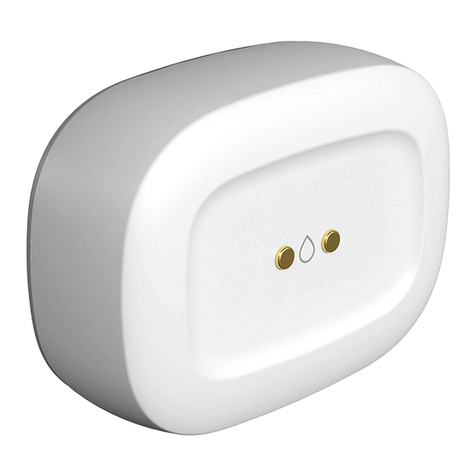
Samsung
Samsung SmartThings GP-U999SJVLCAA quick start guide
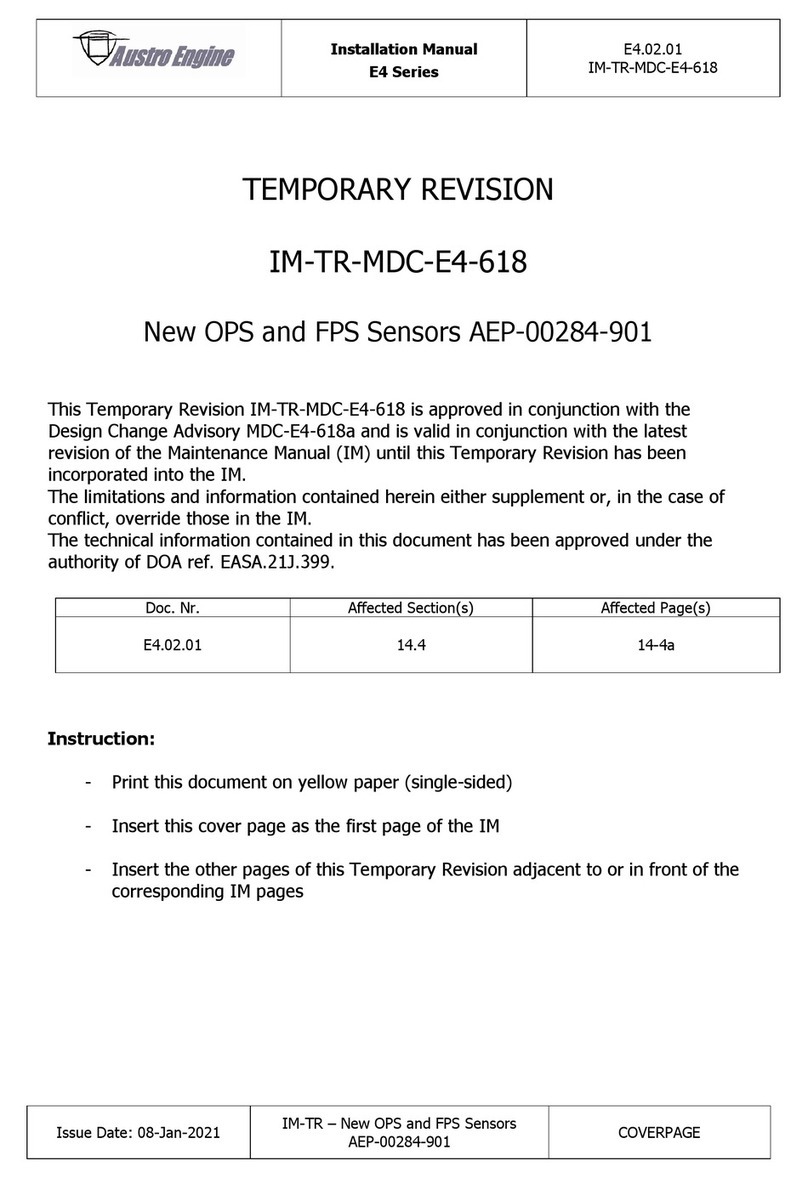
Austro Engine
Austro Engine E4 Series installation manual
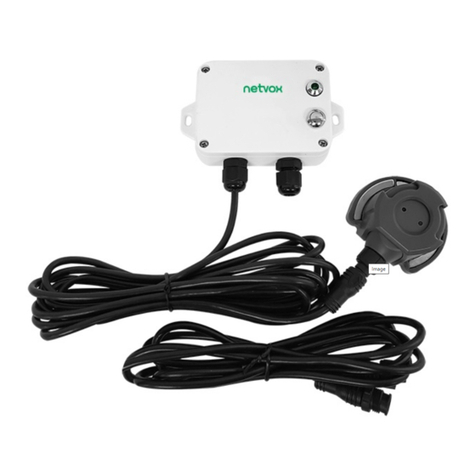
netvox
netvox R718PA22 user manual

Aqara
Aqara Water Leak Sensor quick start guide
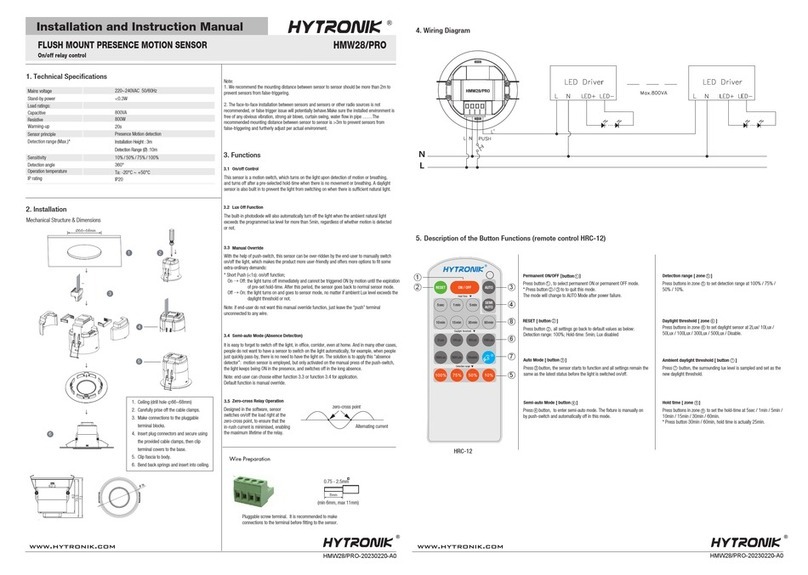
Hytronik
Hytronik HMW28/PRO Installation and instruction manual
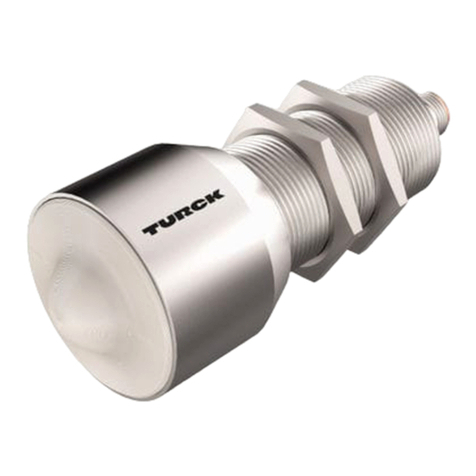
Hans Turck
Hans Turck DR15S-IOL8X2 Series manual
